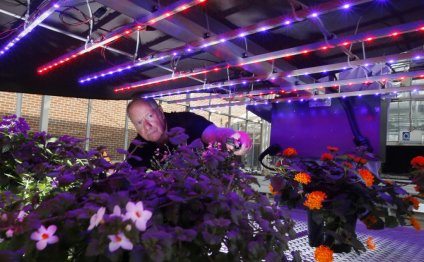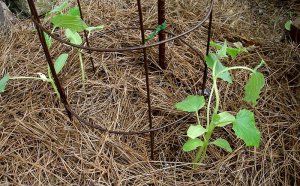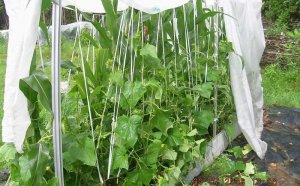
Heat Cucumber Technology
|
Danish Costal Alexandrovich
Prominences of cucumber culture in protected soil:
The cucumber is grown:
Technology cucumber cultivation In the first instance, it depends on which group the class belongs to: the lateral or bee. Paranocarpical cucumbers (TAC-442 hybrids, Aelita, Juventa, Stella et al.) form fruits without piping, bee-operates require pedagogy of bees. Special features of bee-operable varieties and hybridsBeepers are varieties and hybrids of cucumbers such as Magnol, Marathon, HFCA Estafet, TSCHA-28, TSCHA-2693 et al. Along with bee-operable varieties and hybrids, varieties should be grown (Marthin, Teptical-40, Almaty 1), which occupy 10 to 15 per cent of the landing area. The crop and planting periods, compared with the lateral carpal, are reduced to a half-month in the second half of December and landing in the second half of January. The type of sprinklers are planted a week earlier than the main classes. Because bee-oping plants are more compact, they'll be planted in the grass. Example diagram of precipitation in blades (dependent on classes):
2x100+50 x 35...40 cm (3, 3-3, 8 p/m2) (birid Surprise 66);
Armoured planting scheme:
2stral 80+60 x 40 cm (3, 5 p/m2) for early landing;
Plant formation, which depends on the class, also differs. In the Classes of the Klinsk Sortotype (Marthin, Multivar VCV, Almaty 1 et al.), the main escape shall be secured over the 8-9 leaf, then every 2-3 leaf. The side runs are pinned over the second foetus, leaving two foetus on each side escape. The new hybrids (Manul's slap) have the first four leaf scents. The main mould shall be pinned, leaving 3-4 leaf and 2-3 escapees over the top shell, which shall be downward and shall be secured 1 m from the ground. Lower side runs hung over the second sheet, medium and upper runs over the fifth. For polluting, bees or swords shall be ultrasounds (1 per 1,000 m2). Cleaning is done more often in 1-2 days. The yield of bee-operated hybrids is 20-28 kg/m2. Methodology for the production of ogres in winter-weight culture
Parthenocarpical hybrids are considered to have some technological advantages over beeoped varieties and hybrids:
Pre-conditioning seeds. One effective means is thermal decontamination: first, seeds are warmed in thermostat for 3 days at + 50 °C, then for 1 day at + 76...78 °C, which kills viral infection.
For decontamination from mushrooms and bacteria, seeds shall be treated with pesticides:
In order to accelerate growth, seeds in micronutrient solution shall be wrapped for 12 hours:
The seeds on the sand will be planted in early December, the landing in early January. Some long-fried hybrids (NIS-412) may be a month earlier, as they are less sensitive to the level of lighting. For 1 ha, the heaters are required from 15 to 16 thousand sludges (for long-fried varieties) to 18 to 20 thousand (for short varieties). Semen are required from 600 to 850 g respectively. 2-3 cm deep. Russad cucumber grows in 8x8 cm, no peak. The electrical heating system shall include:
- 240 W/m2, 2-3 days - 24 h/day, 10-12 days - 16 h/days
Temperature mode:
The relative humidity of the air shall be between 70 and 75 per cent. Flying I shall be dispersed through the heat water raining system (+25...28 °C), bringing the humidity of the peas to 75-80 per cent. 12 to 14 days after the harvest, before the harvest starts, plant sprawls are set up (at 20...28 plants per m2).
They plant a permanent seat at the age of 30 days, after which the scatter starts to stretch and its quality is declining. The range to landing shall be 5-6 leaves, a well-developed root system, a height ~ 25-30 cm, a wet mass of 35 - 40 g.
There are several ways of planting in greenhouses.
After boarding, there's a pole. Two to three days after the planting, the plants are tied by a spagate to a scapalere. For each number of plants, two papalers (50 cm distance) are drawn and plants in a row are alternately tied to the right or to the left shaft (V-shape). It's necessary to improve the lighting conditions. Plant development For long-fertilized lateral hybrids, the following pattern shall be taken from the bottom up: Up to 80 to 90 cm - in leaf pazukhs, the side runs and the blinds are removed; The following 20-30 cm - 3-4 side runs are pinned on 1 sheet and 1 line; Further up to a height of 170 cm - side runs are pinned on 2 leaflets and 2 latches; From 170 cm to scaplers, side runs are pinned on 3 sheets and 3 laps. In total, the main escape of long-fried hybrids to scaplers leaves between 4-6 and 8-10 bonds. Short-fertilized hybrids leave up to 16 latches in the upper ladder in the leaflets to the 2nd tie. After the plant grows up to the top of the plant (with 35-40 days after planting), it begins to form the upper part of the plant. Reflexes and connects to the scapalere, clicks on the fourth sheet, leaving 3 escapes evenly between plants. These runs are pinned twice in 50 cm, and their side runs leave two laps. Only the tips of the escapes are removed when the escapees are secured, and the escapees themselves shall not be longer than 20 cm. As they become available, the desired leaves and fertilized escapes are also removed.
Temperature regime after landing:
During the fertilization, temperature rises: sunday +24... +26 °C, in range weather +21...+22 °C, night +18...+20 °C. At the same time, lower groundwater temperatures below +12...+15 °C or cold water streams (lower than +15 °C) in the early stages of growth can cause mass extinction. The relative humidity of the air during the fetal period shall be between 75 and 80 per cent. In the humidity of the air, the symptoms of ascohitosis are more than 95% in 7-10 days. The optimum humidity of the ground in the winter-weighted cucumber culture depends on the vegetation period: when the crop is growing, it is between 50 and 70 per cent of the HL, from the planting up to 70 to 80 per cent, from the beginning of the fertilization to the first fees 75 to 85 per cent, from the first fee to the end of the vegetation. The coefficient of water consumption in the winter-weighted cucumber culture is 18-20 l/kg of fruit (25 times less than the tomato). In the absence or excess of soil moisture, plant development is disrupted, leaves are lost, and crops are declining. Minimal flow rate of cucumber 2-3 l/m2. The interval between the flow of the cucumber in the protected ground depends on the lighting conditions. When photosynthetically active radiation occurs (FAR) 210 J/cm2 per day, the cucumbers shall be filled every 3 days, 840 J/cm2 times 2-3 days, 840 J/sm2 shall be floated daily at the SAR 840 J/sm2. Why? The more solar energy falls on the plant, the more transpiration and photosynthesis and the more water the plant requires. For example, an ogurcian transpiration on sunday is spent up to 16 g water per 1,000 cm2 leaves at 1 hour and at night (when the photosynthesis stops) 1, 6 g per 1,000 cm2 leaves at 1 hour. Example standard and frequency of cucumber poles:
harvesting begins at the lateral hybrids 40 to 45 days after the planting. |
||||||||||||||||||||
Share this Post
Related posts
Heat Cucumbers
For the first fifteen days, the cucumbers need enhanced care and nitrogen food, and after the flower begins, nitrogen is…
Read MoreCucumber Technology
The first thing I know is what your soil is. For cucumbers, a high-fertile place where manure was introduced two years before…
Read More









